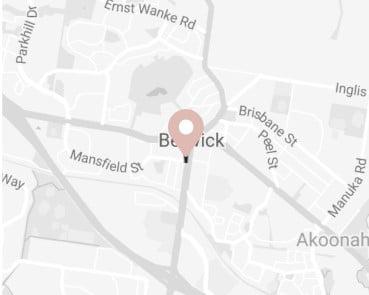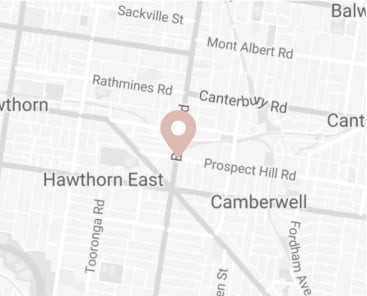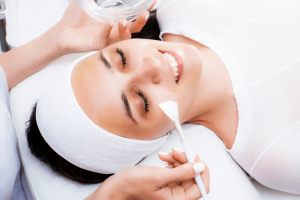For many, the term “chemical peel” invokes images of fiery red skin, pain or visible peeling that is enough for someone to mentally write this treatment off for good. Unfortunately, there is a tremendous amount of misinformation surrounding chemical peels which can create fear and uncertainty among people who are considering this treatment. Some people may be afraid of chemical peels simply because they are unfamiliar with the treatment and don’t know what to expect, while others may be worried about the potential side effects or complications. In reality, a chemical peel is a safe and effective treatment that you do not need to fear, and we are going to set the record straight.
Today, we dive into the ins and outs of a chemical peel, and debunk 5 of the most common myths that are floating around regarding this popular skin treatment. If you’re ready to find out more, simply keep on reading!
What Is A Chemical Peel?
Before we dive into debunking common myths, we must first understand exactly what a chemical peel is and what it does to the skin. A chemical peel is a cosmetic treatment that involves the application of a chemical solution to the skin to exfoliate and remove the outermost layers of dead skin cells. This process reveals smoother, healthier, and more radiant skin beneath. As a result, chemical peels are a highly effective way to target different skin conditions on your face and body.
Unbeknownst to many, chemical peels are in no way a modern invention. In fact, they have been used for centuries as a way to improve the appearance of the skin. Today, they are a popular non-surgical cosmetic procedure that can be performed in a dermatologist’s office, a licensed medical aesthetic clinic as well as a beauty clinic.
Benefits Of A Chemical Peel
Some of the key benefits of a chemical peel include:
Non-Invasive: A chemical peel is a non-invasive procedure that involves the application of a chemical solution to the skin, which causes the top layer of skin to peel off, revealing smoother, younger-looking skin underneath. It also requires minimal to no downtime, making it a fantastic option for those who lead a busy life.
Reduced Acne and Acne Scars: Chemical peels can be an effective treatment for acne and acne scars. They work by removing the outer layer of skin, which can help to unclog pores and reduce inflammation. Chemical peels can also stimulate collagen production, which can help to reduce the appearance of acne scars.
Improved Skin Texture: The chemical solution used in a peel removes the top layer of dead skin cells, which can cause the skin to look dull and rough. Once this layer is removed, the skin appears smoother and much more youthful.
Reduced Fine Lines and Wrinkles: Chemical peels can help to stimulate collagen production, which can help to reduce the appearance of wrinkles and fine lines.
Improved Skin Tone: Chemical peels can also help to improve skin tone. They can be used to treat pigmentation, a condition where certain areas of the skin become darker than the surrounding skin.
How Long Does A Chemical Peel Take To Peel?
The length of time it takes for a chemical peel to peel depends on the type of peel used and the strength of the chemical solution. Generally, the peeling process can start anywhere from 1 to 3 days after the treatment, and the peeling process can last for up to 7 to 10 days.
It’s important to note that the peeling process can vary from person to person, and the exact timing and extent of peeling will depend on individual factors such as skin type and the overall health of the skin. After a chemical peel, it’s important to follow any post-treatment instructions given by your therapist to ensure proper healing and to minimise the risk of complications.
What To Expect After A Chemical Peel
After a chemical peel, it’s normal to experience some side effects, and the degree of these side effects will depend on the type and strength of the peel used. Some common side effects include redness, peeling or flaking, sensitivity and mild discomfort.
To help ease any symptoms, your therapist will recommend a variety of post-treatment instructions that may include avoiding exposure to the sun, avoiding picking at or scratching the treated area, and using gentle skincare products that won’t irritate the skin. Most of our clients see results within three months when they follow our instructions, which include regular in-clinic treatments and prescribed skin care at home.
Chemical Peel Myths Debunked
Despite their popularity and effectiveness, there are numerous myths and misconceptions about chemical peels that can cause confusion and even prevent people from trying this beneficial treatment.
Here are some common myths about chemical peels debunked:
- Chemical Peels Make The Skin Worse =
One of the most common questions we get is can chemical peels make the skin worse. The simple answer to that is no. Chemical peels are a safe and effective way to improve the texture, tone, and overall appearance of the skin.
- Chemical Peels Are Painful & Cause Scarring=
While chemical peels may cause some mild discomfort, they are generally not painful. The strength of the peel used will determine the level of discomfort, but most people report only a mild tingling or burning sensation. Scarring is extremely rare when the peel is performed by a qualified and experienced therapist.
- Chemical Peels Are Only For People With Severe Skin Conditions
Chemicals can be used to treat a wide range of skin concerns, from acne to sun damage to fine lines and wrinkles. Even people with relatively healthy skin can benefit from a chemical peel as a way to refresh and rejuvenate their complexion.
- Chemical Peels Require A Lot Of Downtime
While the extent of downtime can vary depending on the type and strength of the peel, most of our clients resume their normal activities within a few days of the treatment. Mild peels may not even require any downtime at all.
- Chemical Peels Are Dangerous
When performed by a qualified and experienced therapist, chemical peels are safe and effective. However, it’s important to follow any post-treatment instructions carefully to ensure proper healing and minimise the risk of complications.
Book Your Consultation Today
At Victorian Dermal Clinics Melbourne, we use the Lira Clinical Peels System, which optimises results while reducing downtime. It may sound too good to be true, but Lira Clinical achieves this remarkable balancing act by formulating resurfacing solutions using healing minerals, botanical extracts and plant stem cells for cellular repair.
These evidence-based peels are cruelty free and made from active natural ingredients, including alpha hydroxy acids (AHAs) such as glycolic, lactic and mandelic acid, and beta hydroxy acids (BHAs) such as salicylic acid along with retinoids (vitamin A), niacinamide (vitamin B3) and specific enzymes.
Explore our extensive list of peels here or simply contact us today to book a consultation with one of our experienced therapists. We look forward to meeting you.






